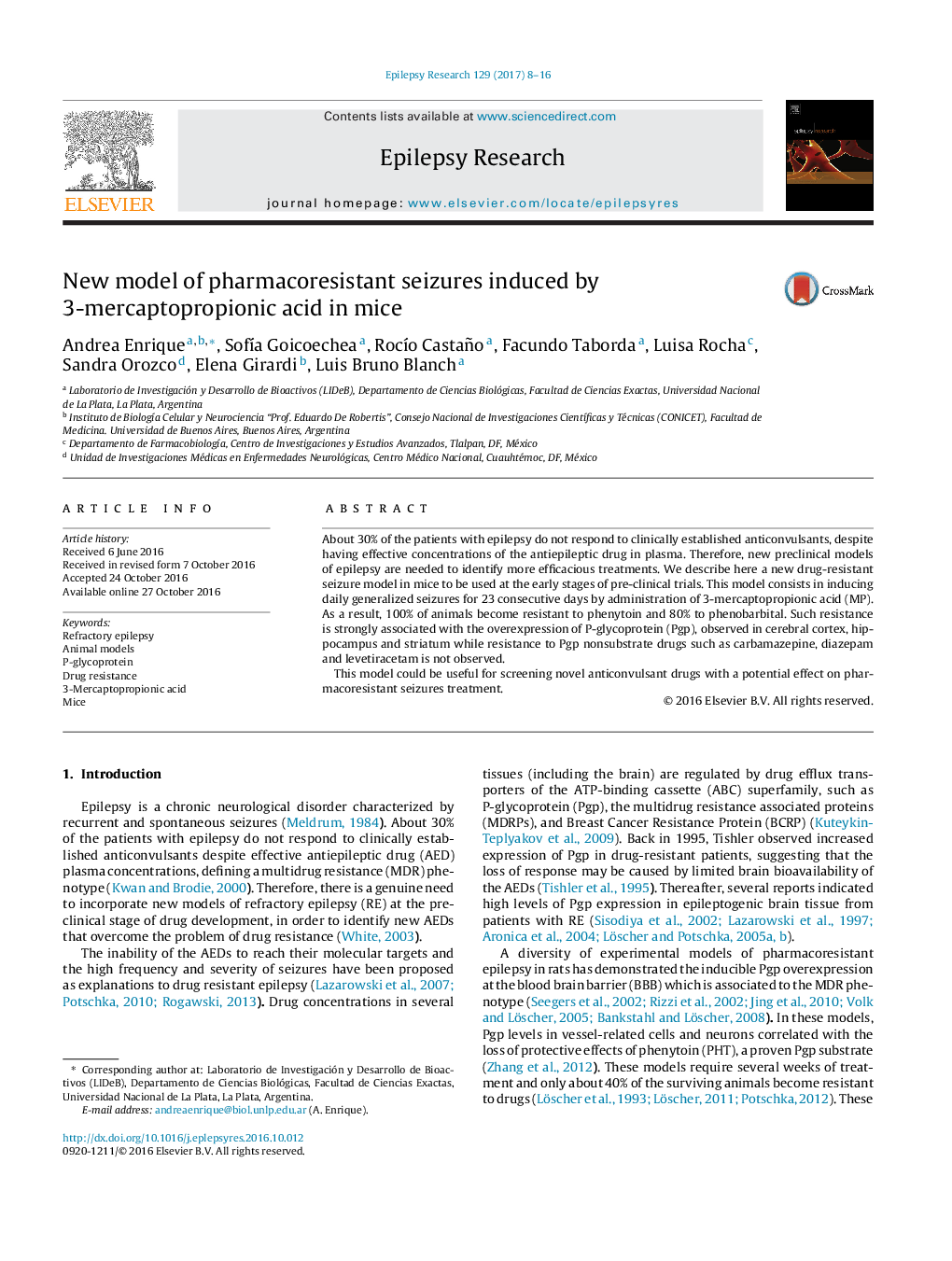| Article ID | Journal | Published Year | Pages | File Type |
|---|---|---|---|---|
| 5628766 | Epilepsy Research | 2017 | 9 Pages |
â¢A new model of pharmacoresistant seizure was developed in mice.â¢In the new model animals have a high percentage of PHT and PB resistance.â¢Resistance is linked to overexpression of Pgp.â¢This model is an excellent alternative to the available models for the evaluation of new drugs.
About 30% of the patients with epilepsy do not respond to clinically established anticonvulsants, despite having effective concentrations of the antiepileptic drug in plasma. Therefore, new preclinical models of epilepsy are needed to identify more efficacious treatments. We describe here a new drug-resistant seizure model in mice to be used at the early stages of pre-clinical trials. This model consists in inducing daily generalized seizures for 23 consecutive days by administration of 3-mercaptopropionic acid (MP). As a result, 100% of animals become resistant to phenytoin and 80% to phenobarbital. Such resistance is strongly associated with the overexpression of P-glycoprotein (Pgp), observed in cerebral cortex, hippocampus and striatum while resistance to Pgp nonsubstrate drugs such as carbamazepine, diazepam and levetiracetam is not observed.This model could be useful for screening novel anticonvulsant drugs with a potential effect on pharmacoresistant seizures treatment.
